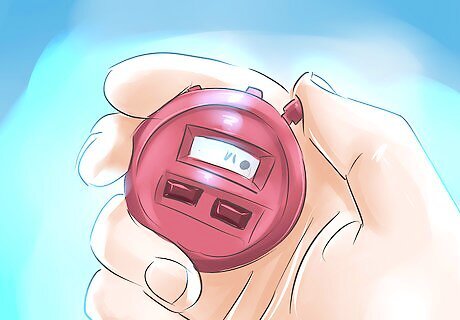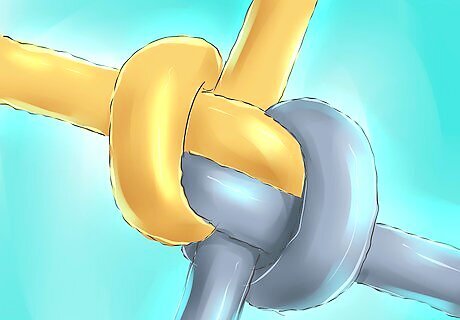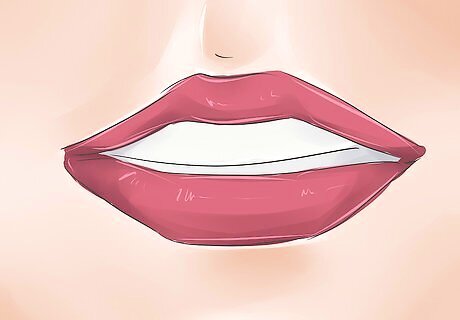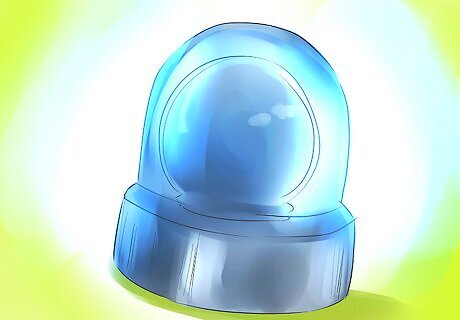
views
Prepare to Sell

Sell something you’re passionate about. People don’t want to buy from a lackluster salesman. Although that doesn’t mean you should be bouncing off the walls with excitement, make sure that whatever it is you choose to sell is something you feel strongly about. Your feelings show in your pitch.

Know where you stand. Be aware of how your product compares to others on the market, and be able to make a case for yours. You need to make your product or service more appealing than all the others out there, and part of doing that is being well educated about the pros and cons of what you’re offering.

Understand your audience. In order to successfully sell something, you need to sell it to the right person. Not everyone is going to want a photography package or a special phone service, so find the person who does. Advertise your product or service in areas which this type of buyer might see it. Don’t force a sale on a buyer if you realize they aren’t interested in what you are offering. This will only annoy them further and frustrate you.

Educate yourself. You can’t sell anything if you don’t know the ins and outs of it. Be sure that you know every detail about what you’re selling, so that no questions by buyers can go unanswered.
Making the Sale

Keep your pitch brief. Even if you consider your sales pitch incredibly interesting and persuasive, you only have about a 60 second time frame to get someone interested in what you have to sell. You should be able to get anyone interested in what you’re selling in one minute or less.

Don’t control the conversation. If you sound like you are forcing the conversation, your audience will either become disinterested or annoyed. Give the person you are selling to the opportunity to ask questions and make comments, and be sure to genuinely listen to what they say. Ask open-ended questions that require your audience to give a complete response. Yes-or-no questions shut down conversation and make you seem closed off from hearing what your audience may have to say. Don’t manipulate their answers. Trying to put words in a persons mouth will frustrate them and make them less interested in hearing your pitch.

Build rapport. You would be better able to sell something to a close friend or family member, right? That’s because you have a bond with them that makes them want to help support you. If you are able to build a genuine relationship with a person, they will be much more likely to buy something from you.

Be honest. Even if telling the truth means pointing out a flaw of your product or service, be honest. This is appealing to many people; honesty is refreshing and desired in a salesperson.

Don’t enter a sale with expectations. Thinking you know how a person will respond or how a sale will go will likely lead to disappointment. You will react in a set manner and lack the flexibility necessary for a good sale. Allow your pitch to be fluid, matching both your audience and the environment.

Validate your audience. Whoever you’re selling to, whether it be a lady from down the street or the CEO of a company, will want to feel justified in their opinions. Should your audience agree or disagree with your pitch, validate them so that they know their opinion is justified. If they disagree with what you tell them, agree that the way they understand things is correct. Simply help to change their perspective with solid examples and real conversation. Validate their need for your product. Help them to feel justified in their purchase of what you’re selling.
Using Sales Tactics

Change your language. Use vocabulary that promotes your audience. Instead of using phrases like “I think that...” or “Let me tell you about...” direct your speech towards them. Say things like “You will love...” and “You’ll find...”

Make the bottom line obvious. You want your product to seem like an obvious choice, and to do so you need to strike on the reasons that is makes life easier, increases profits, saves time, saves money, et cetera. It should be a clear choice that purchasing from you will improve your client’s life significantly.

Avoid “what to buy” sales. If you offer too many things for sale at once, you are likely to overwhelm your client with choices. This makes it nearly impossible for them to give a simple “yes” or “no” to your pitch. Instead, focus on one item or service at a time and ask the question of how many that person is interested in purchasing.

Follow every sale with another offer. Once you’ve made a successful sale, offer up another product or service. Your audience will be more receptive having already agreed to purchasing with you, and you will have to do much less work the second time around.

Make buying from you simple. If you have an elaborate purchase and shipment plan, your audience may become frustrated with the amount of work involved on their part. Simplify everything as much as you can so that the brunt of the work falls on you, not your client.

Set a mutual agreement. This is when you make an agreement with your client on either meeting again in the future or purchasing more product from you. Try setting a date for a future meeting after they agree to make a purchase with you. This way, you’ll have at least one more chance to sell to them again.

Create a sense of urgency. To push a sale, make it seem like there is a short amount of time during which the purchase can be made. That could be because clearance is ending, the price is increasing, or there is a limited number of your product or service available for purchase.
Closing the Sale

Use a direct close. The most basic and straightforward of all the closing tactics, a direct close is simply asking for your customer’s final answer. Although it doesn’t have to be blunt, you are looking for the response to your single sale only.

Make a deal or concession close. To do this, you close your sale with an offer for a discount or additional product at a reduced price. This will not only help to solidify your current sale, but possibly gain you additional sales as well.

Give a trial offer. If your client seems interested in your product, remove their hesitation by offering a test period for your product. This could be a number of days or a sample of whatever it is you’re selling. If they get a chance to use it and find it has value for them, you’ve secured your sale and opened the possibility of more in the future.

Use an ultimatum close. In this, you show that purchasing your product is the only good outcome. You show how not buying from you may be detrimental in the long run, or how similar product or services don’t have nearly as high of standing as yours does.

Show a daily cost. Close by demonstrating how much your product or service costs on a daily basis. This number will likely be low and seem very reasonable to your client, inciting their interest in purchasing it from you.

Make a complimentary close. Show that by purchasing your product or service, your audience is particularly intelligent, logical, helpful, et cetera. This will give them a self-esteem boost, leaving you both on a high note.




















Comments
0 comment